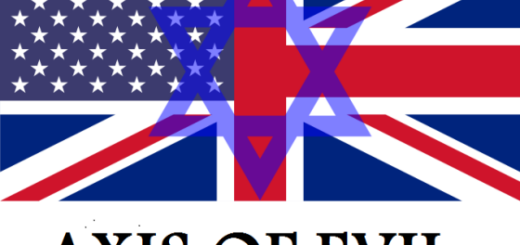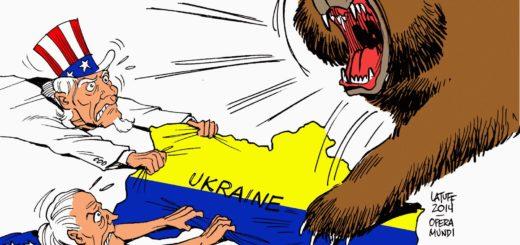Geopolitics of the Great Collapse
Geopolitics of the Great Collapse
It would be impossible to understand the events unfolding in the world today or anticipate the tectonic changes ahead without factoring in geopolitics. As the United States has weakened and destabilized in recent years it has gradually lost its ability to impose its will on the global stage. Though this trend has largely played out through regional proxy wars (Syria and Ukraine for example), ultimately these events must be examined in the context of a competition between great powers over key resources and international trade.
World Reserve Currency Status & The Petrodollar
All empires fall. Throughout history geopolitical dominance has changed hands countless times. The most tangible sign of such a transition is the loss of world reserve currency status. This typically occurs when an empire is weakened by war, economic decline, social unrest or a combination thereof. Though the underlying causes of global realignments build gradually, institutions and governing structures are typically replaced / reset when these forces culminate in a crisis.

In the wake of World War II the Bretton Woods agreement established the U.S. dollar as the world reserve currency. This arrangement gave the United States an extreme advantage in global trade and diplomacy. The U.S. consolidated this advantage through its control of the SWIFT payment system, which is used for the vast majority of large scale international transactions, and by the establishment of Petrodollar agreements which ensured that every oil importing nation was required to hold Federal Reserve notes. Any nation that attempted to challenge this post World War II order was punished with sanctions, covert regime change operations, and or military force.
For the first two decades following the collapse of the Soviet Union Washington faced no serious rival capable of checking its power, however the Obama and the Trump eras were characterized by the rise of Russia and China as assertive players on the global chessboard and an increasingly hapless U.S. foreign policy. The cover provided by Russia and China enabled enabled a number smaller, less powerful nations to defy the U.S. in ways that would not otherwise have been possible. Sanctions and other short sighted tactics employed by the U.S. and its allies only served to drive these countries to deepen ties and cooperation.
By January of 2018 U.S. military doctrine had officially pivoted from the war on terror to a focus on ‘great power competition’. This meant that rather than toppling non-compliant regimes in the Middle East, the U.S. would now be channeling its energy towards confronting Russia and China.
Russia
After the U.S. and it’s allies toppled Libya in 2011 Russia began to maneuver diplomatically and militarily in the middle east to prevent the fall of their other allies in the region. They also launched an alternative to the SWIFT payment system which allowed countries to bypass U.S. sanctions.
Russia’s close ties with Iran, Iraq and Syria put them at odds with Israel, the U.S. and a number of Sunni Arab nations that feared the unification of a so called Shia Crescent. These tensions came to a head during the Syrian war when the U.S. and its allies attempted to overthrow Bashar Assad. Russia’s intervention in this conflict marked the end of friendly relations with the West.
China
During this period China expanded its influence primarily through economic relationships and infrastructure projects throughout Africa, South America and Eurasia. The “Belt and Road Project” (aka The New Silk Road) was the most important face of this initiative.
In parallel China introduced the PetroYuan, an alternative to petrodollar, and began testing its new digital currency (the e-Yuan) positioning it compete with the dollar globally.
In the South China sea, China’s creation of militarized artificial islands represented a new hard edged approach to regional security. The evolution of Beijing’s policies in relation to Taiwan and Hong Kong also reflected this hardening.
Syria
In 2009, Qatar put forth a proposal to run a natural gas pipeline through Syria and Turkey to Europe. Assad however rejected this, and in 2011 he forged a pact with Iraq and Iran to run a pipeline eastward cutting Qatar and Saudi Arabia out of the loop completely. One year later the U.S. began arming and training rebel forces in Syria. Saudi Arabia provided the majority of the fighters. Turkey provided a corridor for weapons and insurgents to cross into Syria, and Jordan hosted training camps. By 2012 it was already clear that the majority of the weapons entering Syria were ending up in the hands of Jihadists. It was these same extremists which later rebranded themselves as ISIS.
Throughout the Syrian conflict western governments and the corporate media did their best to frame Bashar Assad as a brutal dictator with penchant for murdering his own people. This effort climaxed during the 2013 sarin gas attacks which were instantly blamed on the Syrian government. The story fell apart however, when U.N. investigator Carla Del Ponte concluded that it was in fact the U.S. backed rebels that were responsible for the attack.https://www.youtube-nocookie.com/embed/dkamZg68jpk?autoplay=1&modestbranding=1&rel=0&iv_load_policy=3&color=red
Russia tipped the balance in Syria definitively in 2015 when they responded to an official request from the Syrian government for military aid.
Ukraine
In Ukraine, the toppling of Viktor Yanukovych by U.S. backed neo-nazi groups in 2014 backfired when Crimea held a referendum and over 96% of the public voted to join the Russian Federation. Rather than the Sevastopol military base falling into NATO hands (as was intended), Russia strengthened its position significantly.data:image/gif;base64,R0lGODlhAQABAAAAACH5BAEKAAEALAAAAAABAAEAAAICTAEAOw==
The U.S. attempted to punish Russia by imposing a series of draconian sanctions, however this did not have the intended effect. Instead of bowing to this pressure Russia radically reformed its economy to reduce dependence on oil sales and increase domestic production. By 2018 Russia had emerged as a global leader in agricultural exports. Russia also took advantage of Trump’s trade war with China to deepen ties and expand bilateral trade.
Iran
The U.S. and Israel have sought regime change in Iran since the Reagan era. The go-to narrative used to justify sanctions and to push for a military intervention has typically focused on Iran’s nuclear program and the idea that they may someday develop a nuclear weapon. Conveniently omitted from this narrative is the fact that Iran’s supreme leader issued a fatwa against the acquisition or development nuclear weapons in the mid 90s. Also omitted is the fact that Iran has never come close to enriching its uranium to weapons grade. At its peak the Iranian program has enriched up to 20%, however to be used in a nuclear weapon uranium needs to be enriched to at least 90%.
The real reason for Iran’s pariah status has much more to do with their regional influence, and the effectiveness of their proxy militias in Iraq, Syria, Lebanon and Yemen (the Shia Crescent). In January of 2020 Trump ordered the assassination of Qasem Soleimani, Iran’s top general. The assassination, which was carried out as Soleimani made an official visit in Iraq was condemned by many (including a top U.N. rights investigator) as a flagrant violation of international law.

Venezuela
The United States. has sought regime change in Venezuela since Hugo Chavez came to power and nationalized the oil industry. Venezuela sits on the world’s largest oil reserves. In 2002 U.S. backed coup plotters managed to kidnap Chavez and temporarily install a puppet government, however a popular uprising foiled this attempt.
In 2018 the Trump administration threw their support behind Juan Guaidó as he declared himself interim president of the country. This didn’t go well at all.
The great danger that arises with the weakening of the U.S. is the likelihood of a conflict with Russia or China. When a declining power is faced with ascendant rivals war often breaks out as the established power tries to protect its position. This dynamic is known as Thucydides trap.
If war can be averted long enough, the U.S. will eventually collapse of its own accord. Though the economic fallout of such an event would be nothing short of catastrophic, it should be considered the best case scenario.















